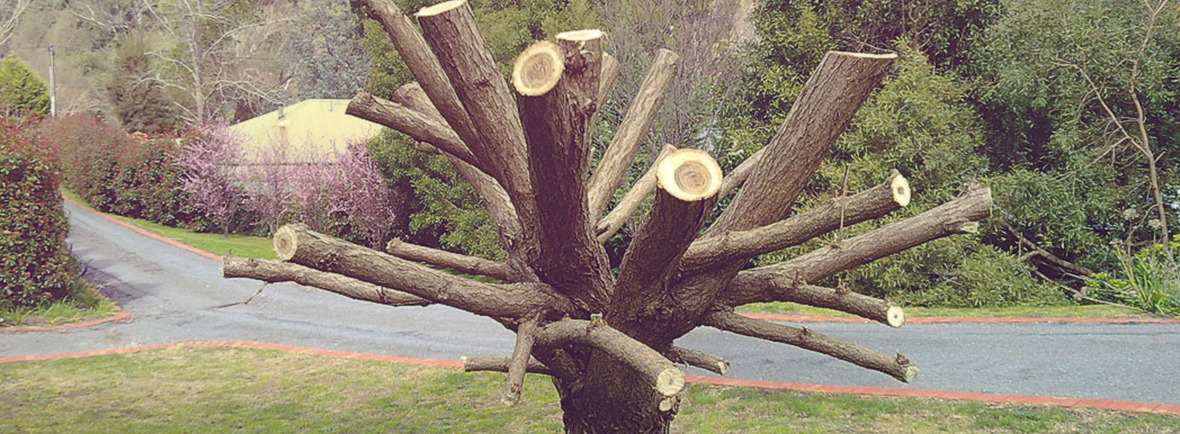Mop Top Robinias & Weeping Mulberries – pruning standard trees
What do you do when you are faced with the daunting task of pruning a weeping mulberry or a Mop-Top Robinia or any other standard tree for that matter? Well, firstly take a deep breath because it’s not as hard as first appears. Secondly, there are some simple tricks you can use which will lead to success, and finally, you can’t do much damage that can’t be fixed by new growth, except to prune below the graft!
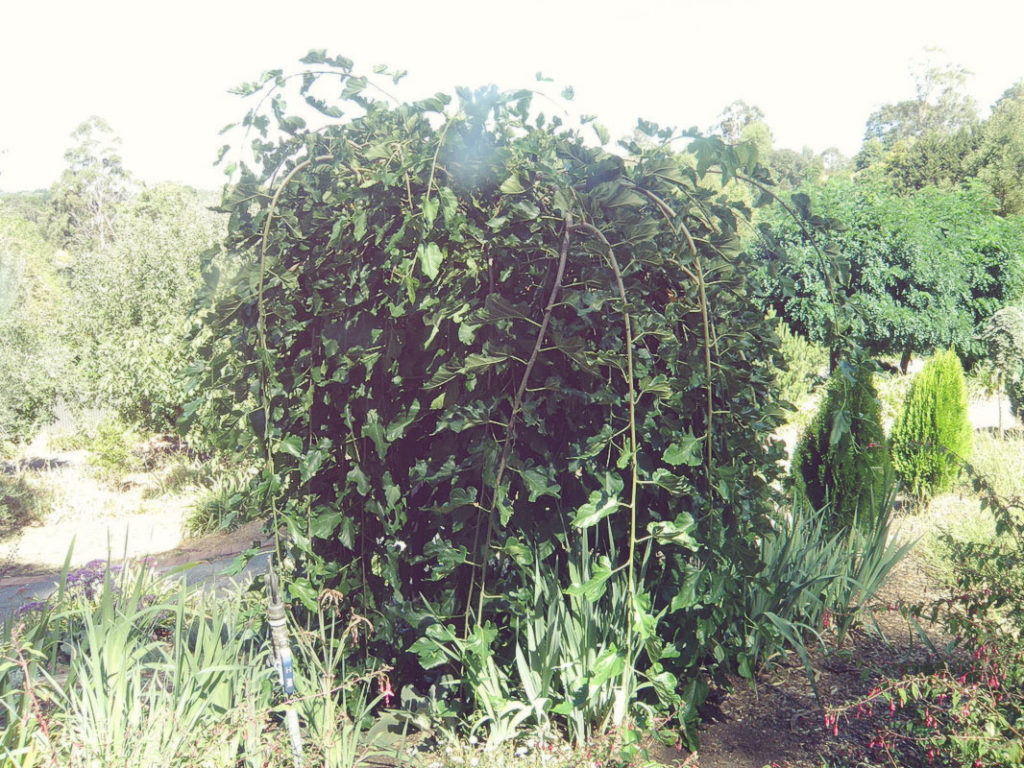
I believe that pruning can be easier if you know what type of plant you have and how it grows, so to begin with, let’s look at what a standard plant is. Basically, it’s one plant grafted onto another at a desired height. The ‘rootstock’ is the host plant, and will usually be in the same plant family as the ‘graftee’.
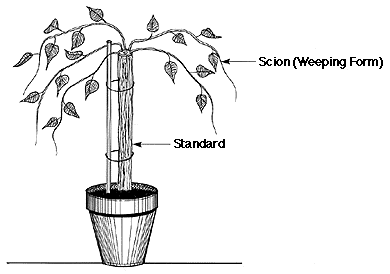 For example, the Mop Top Robinia, with the botanical name Robinia pseudoacacia ‘Umbraculifera’ is grafted onto the Black Locust tree, Robinia pseudoacacia. The latter suckers and is becoming an environmental nuisance, so to enjoy the benefits of the lovely Robinia’s color and foliage, a rare dwarf form of Robinia (Robinia umbraculifera) was grafted on. This results in a small tree that will naturally grow into a dense round ball that is environmentally friendly and will never grow more than 4-5 metres tall.
For example, the Mop Top Robinia, with the botanical name Robinia pseudoacacia ‘Umbraculifera’ is grafted onto the Black Locust tree, Robinia pseudoacacia. The latter suckers and is becoming an environmental nuisance, so to enjoy the benefits of the lovely Robinia’s color and foliage, a rare dwarf form of Robinia (Robinia umbraculifera) was grafted on. This results in a small tree that will naturally grow into a dense round ball that is environmentally friendly and will never grow more than 4-5 metres tall.
There are several benefits to grafting;
The rootstock is usually very hardy, easy to propagate, and quick growing. This means that hard to grow species, perhaps with specific soil requirements, can be grown more easily, such as roses and grafted natives.
With seed grown stock there is always going to
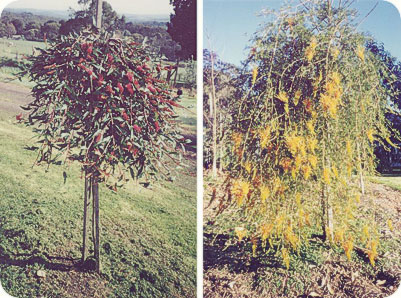
be genetic diversity, so that each plant in a batch of seedlings will be slightly different from another. When plants are grafted using plant material from one source, this diversity is overcome. This means that each Mop Top graft taken from one mother plant is genetically cloned and has an identical head, making formality easier.
Grafted plants will grow to the height of their host rootstock, ensuring uniformity and control. This also means that a low-growing plant, such as a groundcover, can be elevated to a higher status!
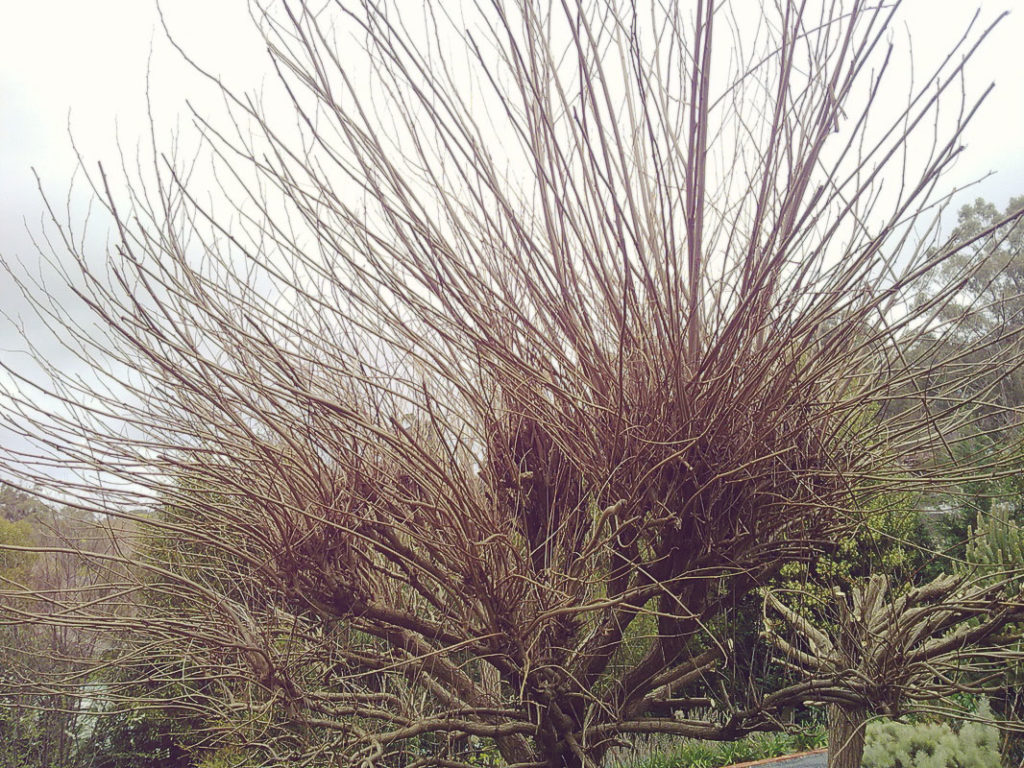
So let’s get down to the business of pruning a standard. My examples here the Mop-top Robinia and the standard weeping Mulberry, as the guidelines are basically the same. I prune in winter when both have lost their leaves, so you can see what you’re doing, but you can always give them a trim at other times.

1. Cut out all dead, ailing, and twiggy branches. Gee that was simple!
2. Cut all other branches off by 2/3rds. This may sound drastic, but there is more to come.
3. Shape the remaining branches. At this point you need to make decisions about which are staying and which are going. Cut off all branches that cross over others in an inconvenient way. Choose your most attractive, strong, healthy, and favourite branches, and clear away the rest. When pruning a weeping standard, cut just below an outward facing bud, so the tree doesn’t start growing towards the centre.
Give yourself a pat on the back for a job well done, pour yourself a cup of your favourite tea and put your feet up – it’s a tiring job!
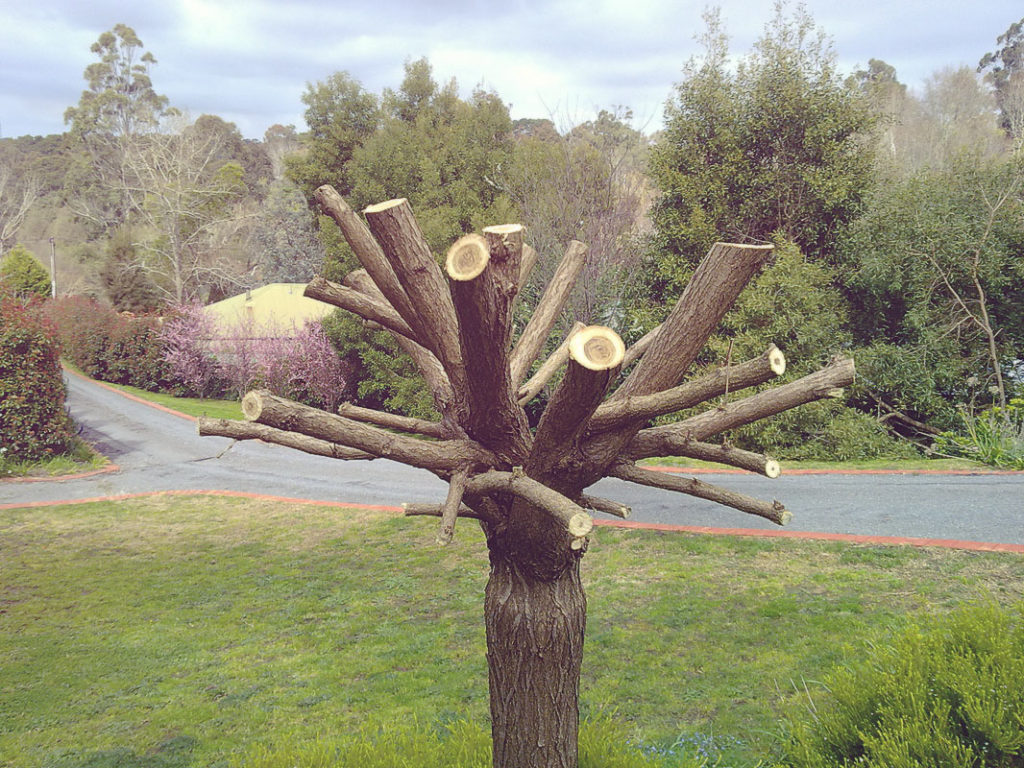
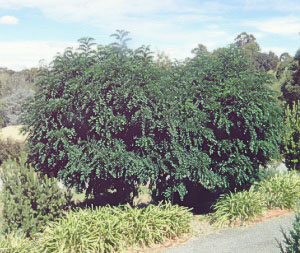
Just a few additional notes…
I don’t always give weeping mulberries or Mop-Tops a severe prune – some years they just need a little trim. However, if you have one that hasn’t been pruned for some time, it may be just what it needs to revitalize and send out some new vigorous growth.
If you are pruning a flowering tree, a weeping cherry for example, find out when it flowers first. If you prune just before it flowers, there goes the reason you probably bought it – the flowers! If it already has a good shape, just trim neatly, like a good haircut.
And just like after a haircut, your plants will regrow!
Cheers and happy pruning,
Amanda


